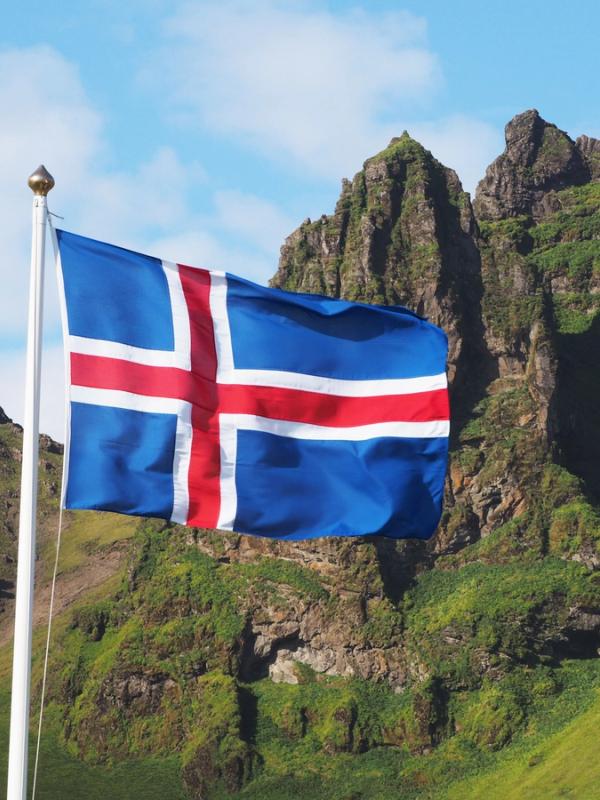
Icelandic Language: What Do They Speak in Iceland?
Did you know that the language spoken in Iceland is Icelandic? When you think of Iceland, you might picture stunning glaciers, bubbling geysers, and the enchanting Northern Lights. But there's another fascinating layer to this island nation: its language. Icelandic isn't just a means of communication; it's a vital part of Iceland’s rich cultural identity. Surprisingly, neither English nor Danish is the official language here. Instead, Icelanders proudly use Icelandic, keeping their unique heritage alive in a world that's becoming more connected every day.
The Roots and Evolution of Icelandic
Icelandic is part of the North Germanic family of languages, sharing roots with Norwegian, Danish, and Swedish. It all started with Old Norse, the language of the Vikings who settled Iceland in the 9th century. This deep history shows up in how Icelandic sounds and functions today, keeping a strong link to its Viking past.
A Very-Well-Preserved Language
One of the coolest things about Icelandic is how well it’s preserved over the centuries. While languages everywhere are always changing, Icelandic has stayed pretty much the same for over a thousand years. This makes it a true "linguistic time capsule." Modern Icelanders can read medieval texts, like the famous Íslendingasögur (Sagas of Icelanders), almost as easily as if they were written yesterday. These sagas offer a window into the lives and stories of early Icelandic settlers, keeping history alive through language.
Iceland’s remote location has been both a good thing and a bit of a challenge for its language. Being so far away has helped keep Icelandic safe from outside influences that have affected other Nordic languages. But it also means keeping up with today’s world can be tough. Luckily, Icelanders really care about protecting their language. Groups like the Icelandic Language Council work hard to keep Icelandic alive, coming up with new words when needed and making sure people use it in everyday life.
Similarities to Other Languages
We have a full guide explaining the similarities between Icelandic and other languages, including German and English, but here are the key takeaways.
Icelandic is closely related to Faroese and Norwegian, thanks to their shared Old Norse ancestry. Faroese, spoken in the Faroe Islands, is the nearest cousin to Icelandic, though it has changed more due to outside influences. Norwegian, especially the Bokmål and Nynorsk forms, has also evolved by incorporating Danish and other languages.
Similarities to Other Nordic Languages
While Danish, Norwegian, and Swedish have become simpler and more modern over time, Icelandic has held on to its complex grammar and rich vocabulary. This makes it stand out and harder for speakers of other Scandinavian languages to understand without some effort. For example, a Norwegian speaker might catch a few familiar words in Icelandic, but overall, the languages don’t sound alike enough to easily understand each other.
Shared Germanic Roots with English
Even though Icelandic might sound different, it shares some Germanic roots with English. This means you might recognize a few words, like:
- Hús (house)
- Fiskur (fish)
- Vatn (water)
- Skógur (forest)
- Bók (book)
These similarities can make learning Icelandic a little easier for English speakers, giving you some familiar pieces to work with as you start picking up the language.
Cultural Resonance from the Viking Age
The link to the Viking Age isn’t just about words. A lot of Iceland’s traditions, stories, and even place names come from Norse roots. This strong history adds layers to the language, filling it with stories and meanings that are special to Iceland and giving it a strong cultural vibe.
Icelandic's Grammar and Phonetics
Icelandic grammar might seem tricky at first, but it’s also fascinating and rewarding. Here are some key features:
- Case System: Icelandic uses four grammatical cases—nominative, accusative, dative, and genitive—to show the role of words in a sentence. For example:
- Nominative: hestur (horse) – the subject
- Accusative: hestinn (the horse) – the direct object
- Dative: hestinum (to the horse) – the indirect object
- Genitive: hests (of the horse) – possession
- Gendered Nouns: Nouns are masculine, feminine, or neuter, which affects how adjectives and articles are used. For example:
- Masculine: góður hestur (good horse)
- Feminine: góð kona (good woman)
- Neuter: gott barn (good child)
- Verb Conjugations: Unlike English, Icelandic verbs change based on tense, mood, and who’s doing the action. For instance:
- Present Tense: ég tala (I speak)
- Past Tense: ég talaði (I spoke)
Phonetics: Unique Sounds and Pronunciation
Icelandic has some unique sounds that can be a bit challenging but also fun to master:
- Þ (thorn): Sounds like the "th" in "thing."
- Ð (eth): Sounds like the "th" in "that."
- Rolled R: The "r" is usually rolled, giving Icelandic its distinctive rhythm.
There are some words, such as Eyjafjallajökull, and sounds that seem impossible to pronounce. Luckily, we have put together a comprehensive guide to mastering Icelandic pronunciation, as well as simpler ones to show you pronounce words like "Reykjavik."
Helpful Icelandic Words for Travelers
If you’re planning a trip to Iceland, picking up a few basic Icelandic phrases can make your experience even better. Not only will it help you get around, but it also shows respect for the local culture. Here are some essentials:
| English | Icelandic | Pronunciation |
| Hello | Halló | HAH-loh |
| Good morning | Góðan daginn | GOH-than DAH-gin |
| Please | Vinsamlegast | VIN-sam-leh-gast |
| Thank you | Takk | TAHK |
| Yes | Já | YOW |
| No | Nei | NAY |
| Goodbye | Bless | BLES |
| Excuse me | Afsakið | AF-sa-keeth |
| I’m sorry | Fyrirgefðu | FI-reer-gehv-thoo |
Although Vinsamlegast is correct, the most common way to say "please" in Iceland is just by saying "please" using the English word, but it's not the only way.
Useful Cultural Expressions
Getting to know some local expressions can give you deeper insights into Icelandic culture:
- "Þetta reddast" Meaning: "It will work out."
This phrase captures the Icelandic spirit of staying positive and handling challenges with a relaxed attitude.
- "Gaman að sjá þig" Meaning: "Nice to see you." Pronunciation: GAH-man ath SYA thig
The Future of Icelandic: Challenges and Preservation
With the world becoming more connected, Icelandic faces some challenges. English is everywhere—in movies, music, and the internet—which can make it tempting to use English instead of Icelandic, especially among younger people.
Government and Community Efforts
To keep Icelandic thriving, both the government and the community are taking active steps:
1. Creating New Words: The Icelandic Language Council invents Icelandic words for new things. For example:
- Tölva (computer) combines tala (number) and völva (seeress).
- Sími (phone) comes from senda (to send).
2. Educational Programs: Schools emphasize learning and using Icelandic, ensuring kids grow up fluent in their native language.
3. Cultural Campaigns: Public initiatives encourage everyone to use Icelandic in daily life, making it a priority over foreign languages.
Conclusion
Icelandic isn’t just a way to communicate—it’s a living part of Iceland’s culture, history, and identity. If you’re curious about Iceland, diving into its language can help you connect more deeply with the country and its people. Whether you’re learning a few phrases for your trip or aiming to become fluent, embracing Icelandic will enrich your understanding and appreciation of this amazing island nation.

